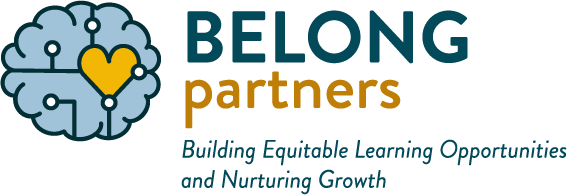As educators, we may (often unconsciously) hold on to the power in our classrooms. But we do have the choice to share power with our students. Sharing power and prioritizing student voice strengthens students’ sense of belonging and diffuses power-over dynamics between educators and young people. When we let go of some control, we are able to build authentic relationships with students and find more joy in teaching.
When we value student voice, choice, and agency we build a more cohesive school community. We look for ways to provide ample opportunities for our students to share their gifts, talents, and abilities. Studies find youth voice also builds leadership skills and improves academic achievement. This is counter-cultural and may initially feel difficult! Here are five ideas to find tangible opportunities to promote student voice and share power.
Provide opportunities to incorporate student choice into lessons, based on their interests, to promote discovery, critical thinking, and identity development.
Centering lessons around student interests is an excellent place to start incorporating student voice and choice in your classroom. Take it a step further by providing opportunities for students to design and lead lessons for their peers.
Create a menu of projects that students can choose from. This allows students to use varied gifts, talents, abilities, and perspectives to contribute to the whole.
Students have unique abilities, needs, and learning styles that are best met by allowing them to choose their own learning journey. For example, instead of telling students they will make a poster, give them the agency to choose between creating a poster, a video, or another team project allows them to self-select what they need.
Elicit student feedback and make changes accordingly.
As this article from Edutopia says, “when we listen to and honor our students, we can show them that their voices can be powerful instruments of learning for themselves and others—and levers of change in their classrooms and beyond.” If there is feedback that cannot be incorporated due to safety or other constraints, lean in to having a connected conversation with your students about why.

Redwood Elementary in Grants Pass, OR is one of the schools in our District Partnerships Program and shows us a great example of eliciting student feedback to make changes. When they were dealing with challenging behavior issues at their school, the school data team decided to gather information from their students to help generate solutions. Read about their success incorporating student voices to create a school community that honors everyone’s feelings and helps students know that they matter and belong.
Use class meetings to ask students to share ideas about problems that exist in their classroom, school, and community and co-create potential solutions.
Class meetings are a useful structure for promoting student voice and problem solving as a school community. Invite students to collaborate and brainstorm solutions to problems together, which creates buy-in for students to follow through with the solutions they have co-created. Our resources on the basics of class meetings and the Path to Problem-Solving Class Meetings worksheet will help you get started.
Provide opportunities for youth to engage in counterstorytelling.
An article from Project Ready describes counterstorytelling as “a method of telling the stories of those people whose stories are often not told,” especially those who do not belong to the dominant white, cis, heterosexual, able-bodied culture. This can validate the lived realities and voices of students of color in your classroom, and challenge perceived realities for white students. By de-centering dominant culture and white voices and stories, we invite all students to lean into speaking their truth.
We can incorporate voice into the fabric of how classrooms are run, from lesson planning to creating agendas to solving problems. Valuing student voice not only works to share power with young people, it also contributes to a more joyful classroom community, as described in this article from Next Generation Learning Challenges. The more we share control in our classrooms and invite students to contribute their voice, the more students know that they belong and matter – and the more connected our school communities become.
